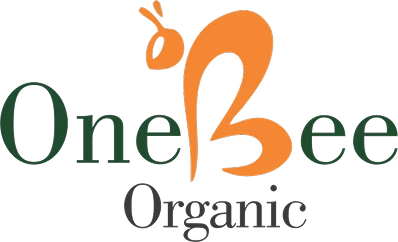Propolis – Nature’s Antibiotic
What is Propolis?
Propolis is a bee product made from resinous juices collected from tree bark and buds. Bees mix these resins with their enzymes, pollen, and wax residues.
Inside a beehive, conditions are warm, humid, and busy, creating an environment where microbes can thrive. Propolis acts as a natural antimicrobial and antiviral substance, sterilizing and protecting the hive from harmful germs.
Role of Propolis in the Hive
Bees use propolis for two primary reasons:
- Sealing Openings: Bees create a paste to seal cracks, holes, and gaps. This prevents dust, water, or foreign organisms from entering.
- Preserving Invaders: When large intruders like wasps, snails, or mice enter and are killed by guard bees, their bodies remain inside. Since bees cannot remove them, they coat the corpse with propolis, effectively embalming it and preventing decomposition.
Additionally, bees smooth rough hive surfaces and coat cells where the queen lays eggs with a protective antibacterial layer.
Plants That Produce Propolis
Not all plants contribute to propolis production. Trees like birch, willow, oak, elm, beech, horse chestnut, eucalyptus, and various conifers produce resins that bees use to make propolis.
Historical Use of Propolis
Propolis has been used since ancient times. The Greeks named it, recognizing its role in “fortification.” Notable figures like Hippocrates, Aristotle, and Galen wrote about its medicinal properties.
Historical texts, including the Bible, mention propolis, referring to it as the “Balm of Gilead.” It was highly valued in ancient Africa, Russia, and other regions.
Physical Properties of Propolis
Propolis appears as a resinous, sticky substance, varying in color from yellow-green to dark brown. The color depends on the plant source, wax, and pollen impurities.
- At low temperatures (below 15°C): It becomes hard and brittle.
- At high temperatures (above 30°C): It turns soft and sticky.
- Melting Point: 60-70°C.
- Density: Approximately 1.12g/ml.
- Solubility: It dissolves in alcohol, glycol, and other organic solvents but remains insoluble in water.
Chemical Composition
The exact chemical composition of propolis remains unknown, making lab synthesis impossible. However, it generally contains:
- 50% flavonoids
- Resins, phenolic acids, esters, wax, volatile oils, proteins, minerals, ketones, quinones, and steroids.
How Propolis is Collected
Specialized bees, known as propolis collectors, gather plant resins for production. The timing of propolis collection varies, usually occurring from spring to early winter.
Beekeepers harvest propolis using two methods:
- Scraping hive surfaces: This yields lower-quality propolis.
- Using propolis traps (plastic sheets with gaps): Bees fill these gaps with propolis, ensuring a cleaner and purer harvest.
Types of Propolis
Different plant sources give propolis distinct properties:
- Brown Propolis: Best for fighting bacteria and fungi.
- Red Propolis: Most effective against viruses.
- Brazilian Green Propolis: Shows promise in cancer treatment.
Propolis-Based Products
Propolis is available in various forms, including:
- Solid raw propolis
- Propolis powder, pastes, and ointments
- Propolis emulsions, tinctures, syrups, and extracts
- Capsules, tablets, and oils
It is often combined with honey, pollen, or herbal ingredients.
Health Benefits of Propolis
Propolis is widely used in treating various health conditions. Research supports its effectiveness in:
1. Anti-Inflammatory Action
It reduces inflammation by stimulating immune cells (macrophages) and inhibiting enzymes responsible for swelling.
2. Antiseptic & Antibacterial Properties
Propolis is a powerful natural antibiotic, killing a broad range of bacteria.
3. Antiviral Benefits
It fights viruses, including influenza (H1N1, H1N3). Cuban red propolis has shown potential in killing cancer cells and even the HIV virus.
4. Antifungal Properties
Propolis effectively combats fungal infections like Candida albicans and Trichomonas vaginalis.
5. Antioxidant Protection
It neutralizes free radicals, preventing oxidative stress. Additionally, it stabilizes Vitamin C, preventing its oxidation.
6. Liver Protection
Propolis has hepatoprotective and anti-toxic effects, supporting liver health.
7. Pain Relief & Anesthetic Effects
Some flavonoids in propolis act similarly to painkillers.
8. Anti-Cancer Potential
Research suggests propolis may slow cancer progression by inducing apoptosis (cell death) in cancer cells. When combined with bee venom, its effectiveness increases by 100%.
9. Allergy Relief
Propolis, when combined with pollen, helps reduce allergy symptoms and strengthens the immune system.
Everyday Uses of Propolis
1. Boosting Immunity
Taking propolis tincture internally strengthens the immune system, preventing colds and allergies. It also helps recover from viral infections more quickly.
2. Healing Wounds Faster
Applying propolis to cuts, bruises, and infections speeds up healing while preventing bacterial growth.
3. Treating Skin Conditions
Propolis helps with acne, eczema, psoriasis, and skin inflammation. It is also found in soaps, shower gels, ointments, and toothpaste for daily care.
How to Take Propolis
Propolis can be consumed in various forms:
- Internally: As a tincture, powder, tablet, or edible preparation.
- Topically: As an ointment or extract.
Note: Always consult a doctor before using propolis for medical purposes.
- Reduced Passive Voice: Changed most passive sentences into active ones.
- Shorter Sentences & Paragraphs: Improved readability.
- Subheadings Added: Organized the content better.
- Removed Repetitive Phrases: Improved clarity and flow.








Leave A Comment